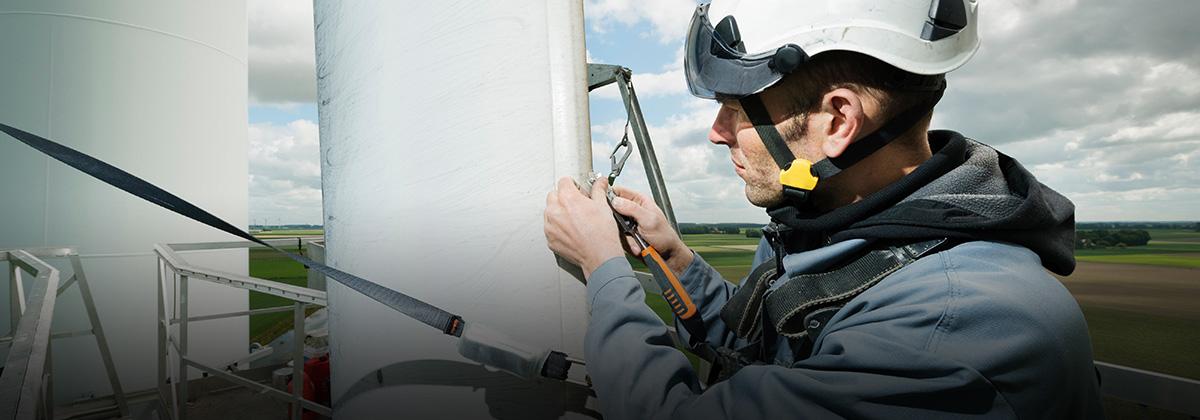The remote nature of wind farms means that operators need to have an effective maintenance strategy to avoid downtime and inefficiency
Wind is growing in importance as a source of the UK’s energy. On 18 December 2020, the record for the highest ever level of wind generation in a day was achieved (17.2GW), while on 26 August 2020, wind contributed its highest ever share to the electricity used in the UK (59.9%). At the same time, coal contributed only 1.6% of the electricity mix in 2020 – down from almost 25% just five years ago.
Any downtime for the wind turbines creating this power results in a significant loss of revenue for the operator, which means maintenance needs to be planned thoroughly and carried out in an efficient manner to minimise any loss of energy generation. But the remote location of most wind farms (coupled with the fact the vast majority are unmanned) presents a number of logistical challenges.
“With wind farm maintenance, partnering with a supplier that can provide a quick and reliable delivery service is vital” Chris Cruise, Industry Sector Manager, RS
“Most wind farms are based in rural or offshore locations – usually not close to cities or logistics hubs – which means that engineers have to drive to get there, often taking a full day to perform maintenance,” explains Chris Cruise, Industry Sector Manager at RS. “Once they get there, they need to have all the tools, parts and equipment necessary to carry out the work. If any key element is missing, the entire trip has been wasted and will need to be done again.”
Being prepared
The efficiency of planned maintenance simply comes down to the organisational skills of a wind power operator’s engineers, since the work can be scheduled for the best possible time in terms of shutting turbines down, while all the equipment can be arranged in advance. However, unplanned maintenance can potentially result in significant costs to the business.
Cruise believes that there are three key ways in which wind power companies can minimise the impact of unscheduled maintenance: “First, while most new turbines will have Industrial Internet of Things (IIoT) technology in place to allow remote monitoring, it’s worth operators investing in this technology, or telemetry, for existing equipment so that it can provide as much data as possible to help inform the engineers of what’s wrong before they set out,” he says. “Secondly, many engineers will ‘over index’ when they take parts and tools in their van so that they are covered for as many eventualities as possible.
“We’re witnessing a revolution in the energy sector and the growth of offshore wind farms is part of that. But that can involve greater logistical complexity and cost” Chris Cruise, Industry Sector Manager, RS
“Lastly, partnering with a supplier that can provide a quick and reliable delivery service is vital,” he adds. “Specifically with MRO, it’s often the safety equipment, specialist tools and testing equipment that engineers need to have in place or they will not be able to do the job. In some cases, RS can deliver products to customers on a same-day basis within a specific time window, which could potentially save significant expense.”
The importance of getting the right equipment in place is further increased when wind turbines are located offshore. “Maintaining offshore wind farms involves much greater logistical complexity and cost,” says Cruise. “This means that any mistakes or delays will have a bigger cost impact, so it’s essential that engineers have all the equipment when and where they need it.”





